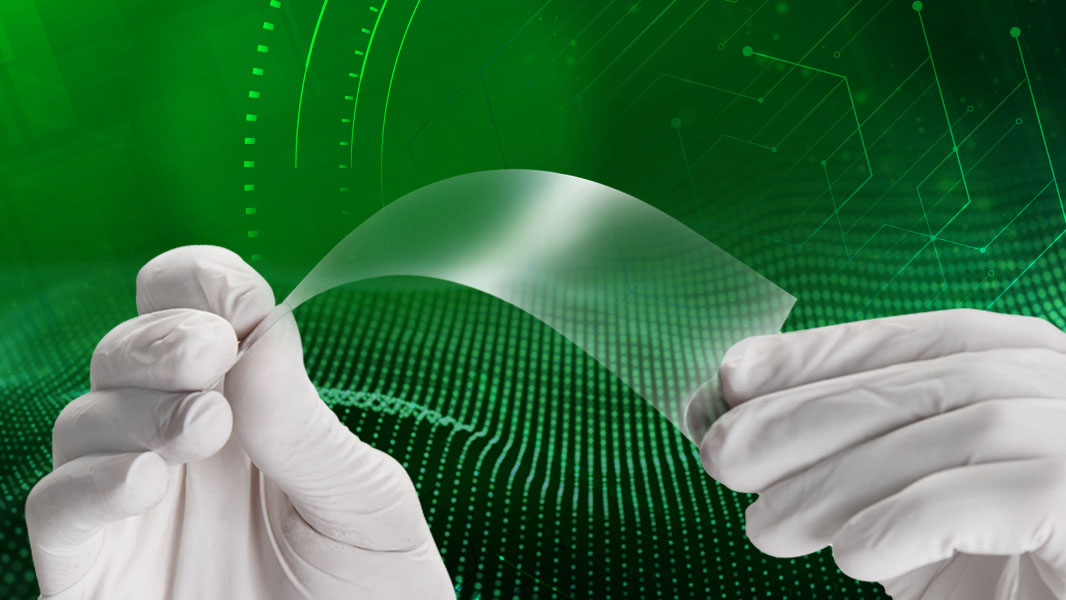2025-07-31
Transparent conductive films combine transparency with electrical conductivity, playing a key role in applications such as electronic displays, solar cells, and smart windows. Among their components, the substrate material significantly influences overall performance.

The electrical conductivity of a transparent conductive film is one of its core functions, and the substrate material’s characteristics largely determine the quality and performance of the conductive layer.
Surface Smoothness
The surface smoothness of the substrate is critical for the adhesion and uniformity of the conductive layer. A smooth substrate surface provides an ideal foundation for deposition, minimizing defects. Materials with low surface roughness—such as PET, PEN, and PC—allow the conductive layer to be applied or sputtered evenly, ensuring consistent performance and quality. Conversely, a rough or uneven substrate can lead to thickness variations and local breaks in the conductive layer, degrading conductivity.
Chemical Properties
The substrate’s chemical properties also affect its bonding with the conductive layer. Different substrate materials have varying molecular structures and surface chemistries, which influence chemical compatibility. Good compatibility enhances adhesion. Surface-treatment techniques can further optimize substrate surface chemistry, strengthening the interface bond and preventing delamination under mechanical stress or harsh environments, thereby extending device lifetime.
Optical performance of transparent conductive films—namely transparency and optical stability—is directly linked to substrate characteristics.
Transparency
The intrinsic transparency of the substrate determines the film’s light transmittance. In high-clarity applications such as electronic displays, substrates must offer excellent transparency. PET, PEN, and PC substrates typically deliver high transmittance to meet these demands.
Optical Stability
Optical stability refers to the substrate’s ability to maintain its clarity over time, under environmental stressors like light exposure and temperature changes. Some substrates may yellow or develop haze, reducing transmittance. PET and PEN, for example, exhibit strong resistance to photothermal aging, maintaining high transparency and low haze over prolonged use, whereas lesser-grade materials may degrade and shorten the film’s effective life.
In real-world applications, transparent conductive films often require mechanical properties such as flexibility and hardness, which are determined by the substrate.
Flexibility
Substrate flexibility affects the film’s manufacturability and durability. Flexible electronics—such as bendable or foldable displays—demand substrates with high tensile strength and elasticity. Polyimide (PI) substrates excel in such roles, whereas more rigid substrates may crack under repeated bending.
Hardness
Surface hardness governs scratch resistance and wear durability. In friction-prone applications like touch panels, a softer substrate surface can be easily scratched, compromising both optical and electrical performance and shortening service life. Therefore, substrate selection must balance hardness with necessary flexibility.
Substrate Thickness
Thickness also influences performance: thinner substrates reduce weight and increase flexibility—ideal for wearable or foldable devices—but are more susceptible to damage. Thicker substrates offer greater mechanical robustness but at the cost of increased weight and reduced flexibility.
Transparent conductive films encounter various temperature conditions during manufacturing and use, making substrate thermal stability vital.
Heat Resistance
The substrate’s heat resistance defines both the maximum processing temperature and its suitability for high-temperature applications. PI substrates, with excellent thermal stability, withstand elevated temperatures without deformation, making them suitable for high-temperature sputtering or annealing processes. By contrast, PET substrates soften or deform at high temperatures, limiting their use, while PEN and PC occupy a middle ground, tolerating moderate heat.
Exposure to chemicals and moisture in different environments demands substrates with strong chemical stability for long-term durability.
Chemical Corrosion Resistance
Resistance to chemical attack ensures stability in aggressive environments or during routine cleaning. PET, PEN, and PC generally resist many common chemicals, while PI substrates offer superior resistance to strong acids, bases, and organic solvents.
Humidity Stability
Moisture uptake can cause swelling or deformation in substrates, creating microcracks in the conductive layer. Beyond mechanical stresses from swelling, moisture can drive hydrolytic degradation, electrochemical migration (leading to dendritic shorts), and dielectric breakdown (signal loss). Long-term moisture exposure accelerates oxidation, delamination, and performance decline.
The substrate’s manufacturing friendliness affects production efficiency and cost.
Ease of Processing
PET, PEN, and PC substrates support high-speed, roll-to-roll manufacturing, enabling large-scale, low-cost production with high yields. Traditional PI substrates require more complex handling, specialized equipment, and slower throughput, resulting in higher costs and lower yields. Emerging technologies—such as photosensitive PI cured by UV light—are simplifying PI processing but have yet to match the cost-effectiveness and scalability of polyester and polycarbonate substrates.
Substrate selection profoundly impacts every aspect of transparent conductive film performance: electrical, optical, mechanical, thermal, chemical, and economic. For general-purpose applications, PET substrates offer an optimal balance of properties and affordability. In demanding environments—extreme temperatures, harsh chemicals, or flexible electronics—high-performance substrates such as PEN or polyimide may be more suitable. By aligning substrate characteristics with application requirements, engineers can ensure reliable, long-lasting transparent conductive films.